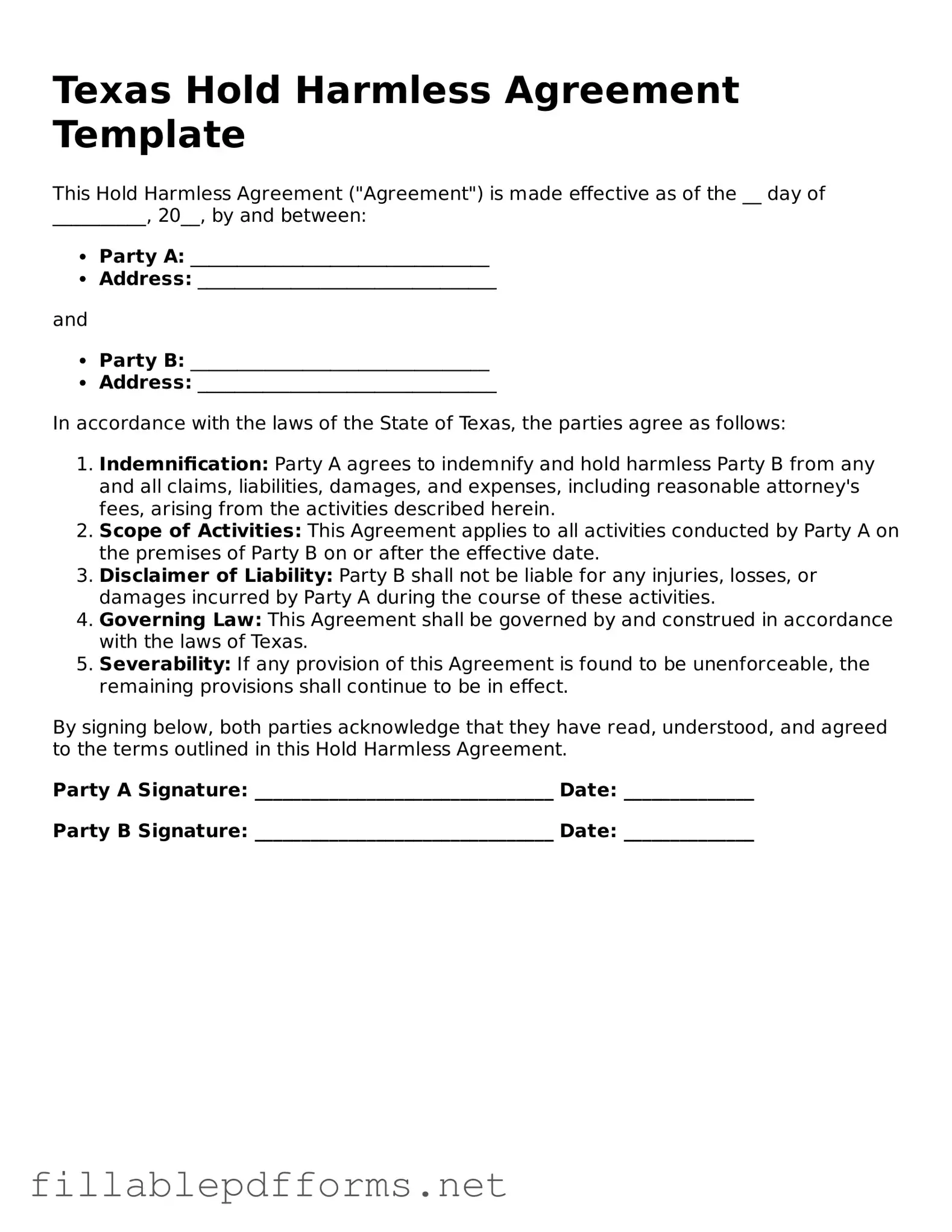Attorney-Verified Hold Harmless Agreement Form for Texas State
A Texas Hold Harmless Agreement is a legal document that protects one party from liability or claims arising from the actions of another party. This agreement is often used in various situations, including construction projects and rental agreements, to ensure that one party will not hold the other responsible for certain risks. By signing this form, individuals can foster a sense of security and clarity in their business or personal transactions.
Launch Editor Here
